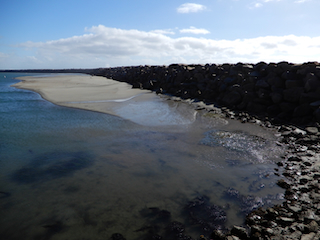
-
| 
-
| 
-
|

-
| 
-
| 
-
|

-
| 
-
| 
The large and sturdy carnivorous snail, Mexacanthina lugabris, has been extending
it range northward from the Pacific coast of the Baja California Peninsula, and is now common in Orange Co, California.
I remember when I first personally noticed it for the first time at Thousand Steps beach in Laguna Beach over 20 years ago,
but I had already seen many of them further south in La Jolla in San Diego County around that same time. Somewhere (source needed), I saw that
it was recorded was much earlier present in OC, perhaps in the 1930s. Its predatory habits could have an impact on southern California
communities of intertidal animals. For example, I have observed it drilling California mussels (Mytilus californianus).
|

-
| 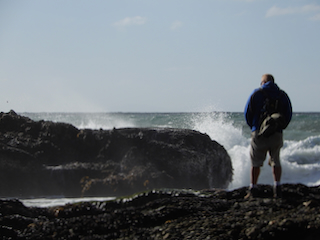
-
| 
-
|

-
| 
There was a very strong wind and 7-8 foot swells at Dana Point on this visit, both settling down somewhat by later in the afternoon
as the tide also got lower. Low tide was at 2:55 PM PST -1.34 ft.
| 
-
|

-
| 
-
| 
-
|

-
| 
-
| 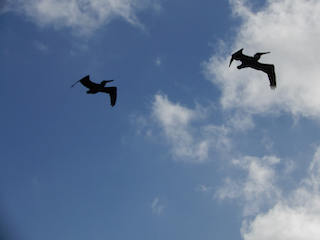
-
|
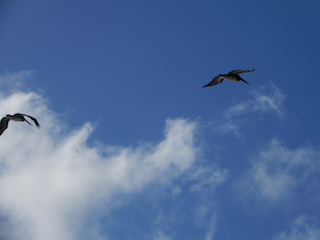
-
| 
-
| 
-
|

-
| 
Littorina keenae (eroded periwinkle) in a depression surrounded by acorn barnacles.>
| 
-
|
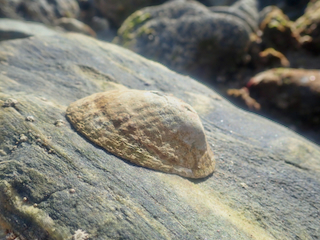
-
| 
Besides the owl limpet (Lottia gigantea) in the upper right, there are many
other smaller limpets in this image on this
vertical rock surface, mostly either Lottia conus (with ribs) or L. strigatella (without ribs).
| 
Owl limpets, Lottia gigantea, are territorial defenders of cleared patches in
California's mid-intertidal zone. They differ from California's about 20 other species of Lottia in having the apex so far anterior combined
with a thickened shell in that anterior portion. They are like the front of a classic locomotive train, and the limpet will use it for plowing off intruders.
|

Nuttallina fluxa (southern spiny chiton) is extremely
common and often heavily eroded, like this one, in southern California and is often mistaken by students as the much less common,
Mopalia muscosa (mossy chiton). N. fluxa is narrower, smaller, and has
spines (not flexible setae) on its girdle.
| 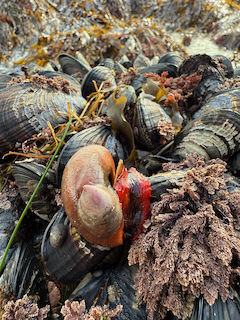
Norris's top snail (Norrisia norrisii) is more common on kelp in the subtidal. This one has a
slipper snail, Crepidula norrisiarum, on its shell (see below for two more views of the same two snails).
The association is rather strict in southern California. N. norrisii rarely
occurs further north but, contrary to most earlier accounts, the range of C. norrisiarum
extends to at least British Columbia, Canada, where it lives on different smaller snail host species and is generally smaller itself. Source:
Castelin et al. 2022 (co-authors include Dr. Ee and his former
undergrad student, Erica Spence)
| 
-
|

-
| 
I observed a pair of whimbrels feeding within the rocky intertidal, using their
long bill to feed on prey, perhaps crabs, within the mussels. I do not remember them feeding this way, more normally seen on sandy or muddy substrates.
The whimbrel has a very long bill but not as long as the long-billed curlew, and it also differs in having a striped cap on its head;
the long-billed curlew has a plain cap without stripes.
| 
-
|

-
| 
-
| 
-
|

-
| 
The sand castle worm (Phragmatopoma californica) is a suspension-feeding
polychaete annelid that cements sand grains into tubes. It is considered an aggregation rather than a colony because individual worms settle
from the plankton to form the aggregation. Some other polychaetes do divide asexually after settling to form a clonal cluster of worms.
| 
-
|
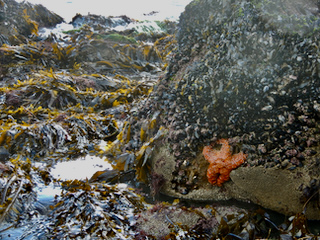
-
| 
It was nice to see that our ochre stars (Pisaster ochraceus) were
observed to be relatively common again. They were massively impacted by the devastating and mysterious sea star wasting syndrome that
killed multiple
sea star species along the rocky shores of western North America, especially between 2013 and 2014.
These sea stars are well known for their ecological importance as keystone species.
Source: MARINe
| 
-
|

-
| 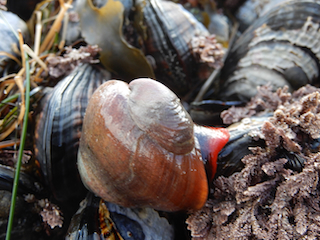
-
| 
-
|
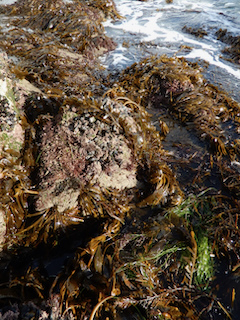
-
| 
-
| 
-
|

-
| 
-
| 
-
|

-
| 
-
| 
-
|

-
| 
These Nuttallina fluxa (southern spiny chitons; or possibly N. sp. A - undescribed)
were observed to have made home depressions in the shell of a large Lottia gigantea (owl limpet). This is important evidence that I have
observed on occasion previously of the ability of these chitons to form home depressions in their substrate. They are commonly observe in such
home depressions when the rock substrate is soft (e.g., sandstone) but it is more difficult to argue that individual chitons have this ability
when they are found in rocks. A similar process has been studied by Lindberg and Dwyer (1983) in the West Coast limpet, Lottia scabra (rough limpet), where the limpets
were shown to secrete acidic mucopolysaccharides from their foot to weaken the substrate, after which they use their iron-coated teeth to further
clean out their depression. The same apparent ability to form home depressions has never been similarly studied in chitons, and would be interesting
to study in these local chitons.
Lindberg and Dwyer (1983)
| 
-
|

-
| 
-
| 
-
|

-
| 
-
| 
-
|

-
| 
-
| 
-
|

-
| 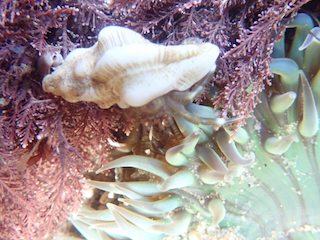
-
| 
-
|

-
| 
-
| 
-
|
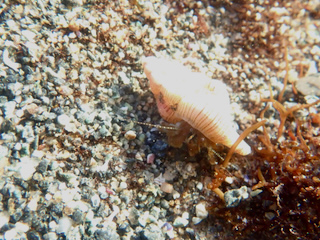
-
| 
-
| 
-
|

-
| 
-
| 
-
|

-
| 
-
| 
-
|

-
| 
-
| 
-
|

-
| 
-
| 
-
|

-
| 
-
| 
-
|

-
| 
-
| 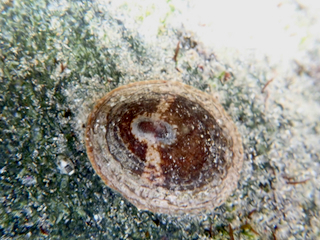
This file limpet (Lottia limatula) was temporarily nudged off a rock to reveal
its diagnostic blackish head and side of the foot. Only owl limpets (L. gigantea; see above) have similarly pigmented tissues, but the latter species has an anterior,
not nearly central, apex. L. limatula often have eroded shells like this one. When uneroded, they have fine riblets with file-like imbrications
that can be felt with one's fingernail dragging it from the posterior margin to the apex.
|

-
| 
-
| 
-
|

-
| 
-
| 
-
|

-
| 
-
| 
-
|

-
| 
-
| 
-
|
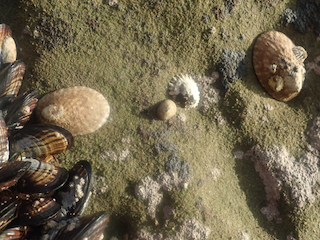
-
| 
-
| 
-
|
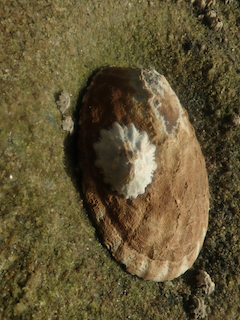
-
| 
-
| 
-
|

-
| 
-
| 
-
|

-
| 
-
| 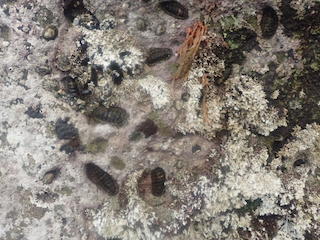
-
|

-
| 
-
| 
-
|

-
| 
-
| 
-
|

-
| 
-
| 
-
|

-
| 
-
| 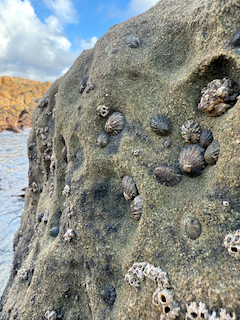
-
|

-
| 
-
| 
-
|

-
| 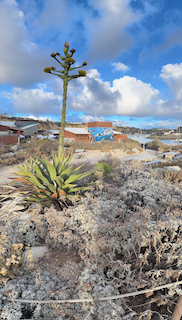
-
| 
-
|

-
| 
-
| 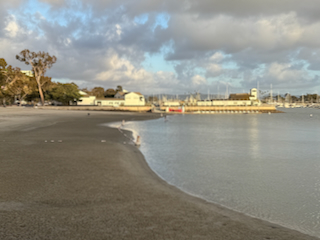
-
|

-
| 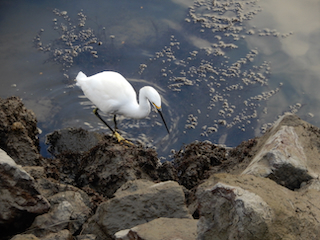
-
| 
-
|

-
| 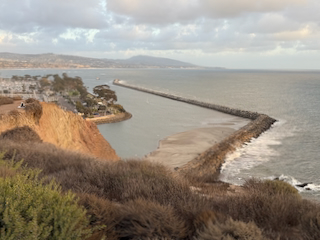
-
| 
-
|

-
|
 Under Construction!
Under Construction! Under Construction!
Under Construction!